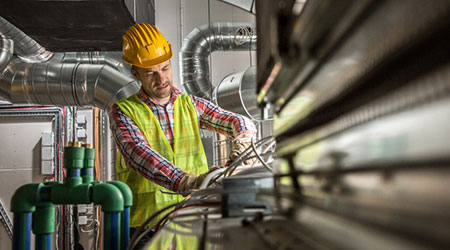One of the design shifts that COVID-19 has accelerated is the focus on how to manage a building to protect the occupant health, according to an article on the Infection Control Today website.
Research has shown certain indoor air management strategies are either protective or putting people at risk. There are some new ways of actually understanding the relationship between indoor air management and human health in hospitals.
COVID-19 has really focused our attention on how a building can either protect us or not from disease. It’s always been important, but people are now aware of the importance of managing the building to prevent health problems.
In general, airflow has been managed by the engineers, by the architects, by the facility managers and not so much by the clinicians. But there is a lot that can be done in indoor air management to decrease transmission of infections.
It is the overlap of seasons and HVAC system operation that determines the indoor environment—where most viral propagation occurs, according to a Consulting-Specifying Engineer article..
Research has linked air between 40 and 60 percent relative humidity (RH) with less-effective aerosol travel, shorter airborne and surface survival times, lower transmission rates and more effective patient lung repair functions.
However, hospitals in colder climates typically operate at lower RH levels (often 20 percent-30percent) during winter, in line with minimum requirements.
Most Northern Hemisphere cities have a window of opportunity before summer arrives to increase humidification to 40 percent.
Read the full Infection Control Today article.

 Grounding Healthcare Spaces in Hospitality Principles
Grounding Healthcare Spaces in Hospitality Principles UC Davis Health Selects Rudolph and Sletten for Central Utility Plant Expansion
UC Davis Health Selects Rudolph and Sletten for Central Utility Plant Expansion Cape Cod Healthcare Opens Upper 2 Floors of Edwin Barbey Patient Care Pavilion
Cape Cod Healthcare Opens Upper 2 Floors of Edwin Barbey Patient Care Pavilion Building Sustainable Healthcare for an Aging Population
Building Sustainable Healthcare for an Aging Population Froedtert ThedaCare Announces Opening of ThedaCare Medical Center-Oshkosh
Froedtert ThedaCare Announces Opening of ThedaCare Medical Center-Oshkosh